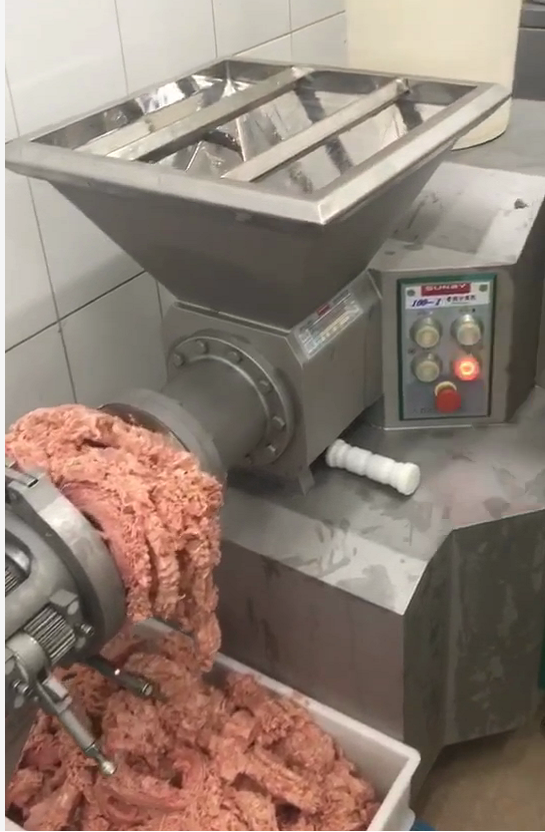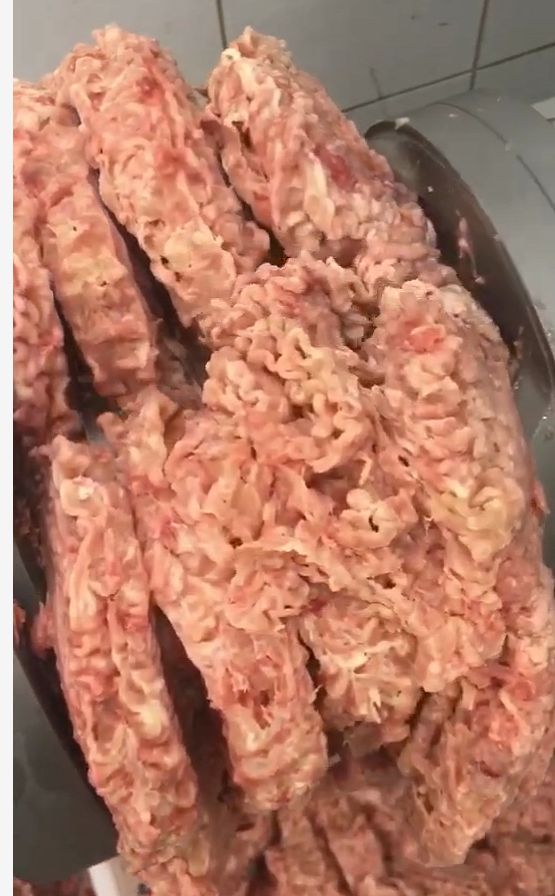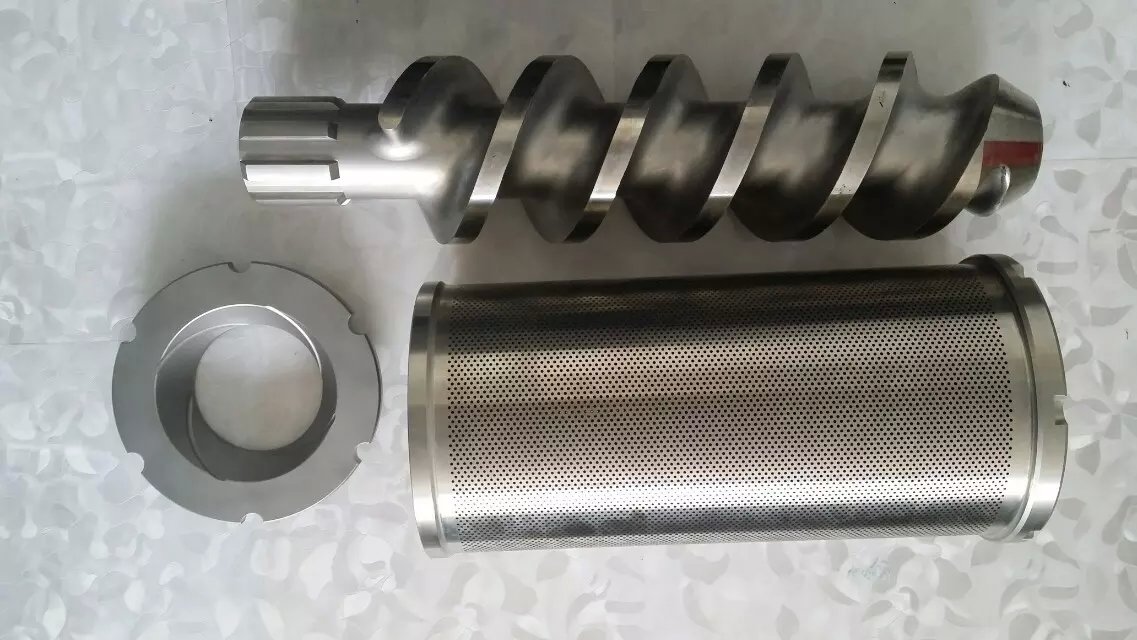
अगस्ट . 06, 2025 05:40 Back to list
Automatic Deboner Machine for High-Yield Processing
In the competitive landscape of food processing, efficiency, yield, and product quality are paramount. The industrial Deboner stands as a cornerstone technology, engineered to revolutionize how meat, poultry, and fish are processed. This comprehensive guide delves into every facet of the modern **Deboner**, from emerging industry trends and critical technical parameters to real-world applications and manufacturer comparisons. Our goal is to provide an expert-level resource that demonstrates the undeniable value of integrating a high-performance **Deboner** into your production line.
At Bossin Machinery, we leverage over 20 years of industry experience to engineer equipment that meets and exceeds global standards. Our flagship Deboner is not just a machine; it's a comprehensive solution for maximizing profitability while upholding the strictest food safety protocols.
Industry Trends: The Evolution of Meat Separation Technology
The global meat processing industry is undergoing a significant transformation, driven by consumer demand for high-quality, safe, and affordable protein. This shift has placed immense pressure on processors to adopt more advanced technologies. A key trend is the move towards automation and precision engineering in equipment like the Deboner.
- Focus on High Yield: With rising raw material costs, extracting the maximum amount of usable meat from carcasses is no longer just a goal—it's a financial necessity. Modern Deboner machines are designed to achieve yields of 80-90%, a substantial increase from older technologies.
- Emphasis on Meat Quality: Low-pressure, low-temperature deboning is becoming the industry standard. This technique, central to the Bossin Deboner design, prevents the crushing of bone and overheating of the meat. This preserves the muscle fiber structure, resulting in a final product with superior texture, color, and binding properties, ideal for high-value products like sausages, patties, and reformed meats.
- Stricter Food Safety and Hygiene Standards: Regulatory bodies worldwide (like the FDA and EFSA) are enforcing more stringent hygiene rules. This has led to the adoption of equipment made from food-grade stainless steel (SUS304/SUS316) and designs that facilitate easy cleaning and sanitation (Clean-in-Place compatibility).
- Sustainability and Waste Reduction: An efficient **Deboner** not only maximizes meat recovery but also contributes to a more sustainable operation. By effectively separating meat from bone, the bone residue can be processed into lower-value by-products like bone meal or broth, minimizing waste and creating additional revenue streams.
Unveiling the Core: Deboner Technical Specifications
Understanding the technical specifications of a Deboner is crucial for selecting the right model for your specific production needs. Below is a detailed parameter table for the Bossin range of **Deboner** machines, showcasing their versatility and power. These specifications are a testament to our commitment to engineering excellence and transparency, aligning with our ISO 9001:2015 certified quality management system.
| Parameter | Model BSNJ-I | Model BSNJ-II | Model BSNJ-III | Industry Standard (Reference) |
|---|---|---|---|---|
| Processing Capacity | 800 - 1500 kg/hr | 1800 - 2500 kg/hr | 3000 - 4000 kg/hr | Varies widely; 500-5000 kg/hr |
| Main Motor Power | 11 - 15 kW | 22 - 30 kW | 37 - 45 kW | Dependent on capacity |
| Material of Construction | SUS304 Food-Grade Stainless Steel (SUS316 optional) | SUS304 minimum for food contact | ||
| Meat Yield Rate | Up to 85% (depending on raw material) | 70-85% | ||
| Bone Residue Calcium Content | ||||
| Operating Temperature Increase | ||||
| Dimensions (L*W*H) | 1800*850*1300 mm | 2200*950*1500 mm | 2500*1100*1700 mm | Varies by manufacturer |
| Control System | PLC with Touch Screen Interface / Manual Control Panel | Manual or basic PLC | ||
| Certifications | CE, ISO 9001 | CE often required for EU market | ||

The Manufacturing and Process Flow of a Bossin Deboner
The superior performance of a Bossin Deboner is not accidental; it is the result of a meticulous manufacturing process and an ingeniously simple, yet effective, operational design. Our commitment to E-A-T (Expertise, Authoritativeness, Trustworthiness) is reflected in every stage of production.
Manufacturing Excellence: From Raw Material to Finished Machine
- Material Selection: We exclusively use certified SUS304 and SUS316 stainless steel, sourced from reputable suppliers. This ensures exceptional corrosion resistance, durability, and full compliance with international food safety standards like FDA and EU regulations.
- Precision Machining: Key components, such as the auger (screw) and separation filter, are crafted using multi-axis CNC (Computer Numerical Control) machining centers. This ensures tolerances are met with micron-level accuracy, which is critical for efficient separation and long service life.
- Advanced Forging & Casting: Structural components are forged or precision-cast to enhance their mechanical strength and resistance to the high pressures involved in the deboning process.
- Quality Control & Testing: Each Deboner undergoes a rigorous testing protocol before dispatch. This includes pressure tests, non-destructive testing (NDT) on welds, and a full operational run to verify performance against the stated specifications. This process is documented under our ISO 9001 certified system.
Operational Process Flow Explained
The mechanical separation process is designed for maximum efficiency and minimal product degradation. Here’s a step-by-step breakdown:
Pre-crushed raw materials (like poultry carcasses, fish frames) are fed into the hopper of the Deboner.
A robust auger (screw conveyor) transports the material forward, gradually increasing pressure. This is the "low-pressure" stage, designed to gently detach meat from bone without pulverizing it.
The pressurized material is forced against a precision-engineered perforated filter (sieve). The softer meat tissue is extruded through the small holes of the filter.
The recovered meat mince is collected from an outlet, while the harder bone residue, unable to pass through the filter, is continuously discharged from the end of the machine. The result is two clean, separate streams: high-quality meat and bone residue.

Data-Driven Insights: Visualizing Deboner Performance
To truly appreciate the impact of a high-performance Deboner, data visualization is key. The following charts illustrate the tangible benefits of the Bossin **Deboner** based on aggregated performance data and industry benchmarks.
Chart 1: Typical Meat Yield Distribution (Poultry Carcass)
This chart shows the exceptional efficiency of the Bossin Deboner, maximizing the most valuable component—the recovered meat.
Chart 2: Performance Comparison vs. Industry Average
A direct comparison highlights the superior yield and lower temperature increase of the Bossin Deboner, which directly translates to higher profitability and better product quality.
Chart 3: Operational Temperature vs. Meat Quality Index
This line graph illustrates a critical concept: the Bossin Deboner's ability to maintain a low operational temperature is directly correlated with preserving a high meat quality index (a measure of texture, color, and binding properties).
Competitive Edge: Bossin Deboner vs. The Competition
Choosing the right equipment supplier is as important as choosing the right machine. Our expertise is built on a foundation of superior engineering, customer-centric service, and a transparent approach. The table below provides an honest comparison between a Bossin Deboner and typical competitor offerings.
| Feature / Aspect | Bossin Deboner | Generic Competitor A | Generic Competitor B |
|---|---|---|---|
| Maximum Yield Rate | Up to 85% | ~78% | ~75% |
| Core Material | Certified SUS304/SUS316 with Mill Test Certificates | SUS304 (unverified source) | Mixed materials, some non-stainless parts |
| Manufacturing Process | CNC Machined Auger & Filter, Precision Casting | Standard Machining | Basic Fabrication |
| Motor Efficiency | High-Efficiency IE3/IE4 Motors (Siemens/ABB) | Standard Efficiency Motors | Generic, lower-efficiency motors |
| Control System | Advanced PLC with custom programming options | Basic PLC or push-button | Manual Controls only |
| Certifications | CE, ISO 9001, Materials compliant with FDA | CE (self-declared) | No major certifications |
| After-Sales Support | 24/7 Online Support, On-site Engineers, 2-Year Warranty | Email support, 1-Year Warranty | Limited support, parts availability issues |
Customized Solutions and Diverse Application Scenarios
We understand that no two processing plants are identical. That's why we don't just sell machines; we provide customized solutions. Our engineering team works directly with clients to tailor the Deboner to their specific needs.
Customization Options:
- Material-Specific Configurations: We optimize the auger pitch, filter perforation size, and pressure settings for different raw materials, whether it's poultry (chicken, turkey), fish (frames, heads), or red meat trimmings.
- Capacity Scaling: From small-scale operations to large industrial plants processing several tons per hour, we offer a model that fits your throughput requirements.
- Line Integration: Our Deboner machines are designed with standard input and output heights and can be equipped with custom hoppers and conveyors to seamlessly integrate into your existing production line.
Application Case Study: Enhancing Poultry Processing
Client: A large-scale poultry processing facility in Southeast Asia.
Challenge: The client was using an older model deboner that produced low yields (around 72%) and resulted in mechanically recovered meat (MRM) with high calcium content and a noticeable temperature increase, limiting its use to low-value products.
Solution: Bossin Machinery supplied and installed a Model BSNJ-III Deboner, customized for their specific poultry carcasses. We provided on-site training for their staff on operation and sanitation.
Results (Experience):
- Yield Increase: Average yield increased from 72% to 84%, a 12% improvement, recovering tons of additional high-value meat per month.
- Quality Improvement: The resulting meat was visibly superior, with better texture and color. Calcium content was well below the 0.08% mark, allowing the client to use the recovered meat in premium sausage and nugget formulations.
- Operational Efficiency: The easy-to-clean design reduced sanitation time by 45 minutes per shift.
"The Bossin Deboner transformed our by-product processing. The increase in yield alone paid for the machine in under 8 months. But the real game-changer was the quality of the recovered meat, which opened up new markets for us." - Production Manager

Frequently Asked Questions (FAQ) - Your Technical Questions Answered
To enhance trust and demonstrate our expertise, here are answers to some of the most common technical questions we receive about our Deboner technology.
1. What is the difference between SUS304 and SUS316 stainless steel, and which do I need for my Deboner?
Answer: Both are food-grade stainless steels. SUS304 is the industry standard, offering excellent corrosion resistance for most applications, including poultry and red meat. SUS316 contains molybdenum, which provides superior resistance to chlorides and salts. We recommend SUS316 for fish deboning or in environments where harsh, corrosive cleaning agents are used, ensuring maximum longevity and compliance with the strictest standards like ANSI/NSF.
2. How is the bone fragment size in the final meat product controlled?
Answer: Bone fragment size is primarily controlled by the perforation diameter of the separation filter (sieve). Our standard filters have hole sizes ranging from 1.3mm to 3mm. We work with you to select the optimal filter size based on your raw material and the required specifications for your final product, ensuring it meets regulatory limits (e.g., FDA guidelines on bone particle size).
3. What is the typical maintenance schedule for a Bossin Deboner?
Answer: Our Deboner machines are designed for low maintenance. Daily maintenance involves thorough cleaning. Weekly checks include inspecting the filter for wear and checking belt tension. The main auger and filter are wear parts, with a typical lifespan of 2000-4000 operating hours, depending on the abrasiveness of the material. We provide a detailed maintenance manual and spare parts list with every machine.
4. Can the Deboner handle frozen materials?
Answer: The Deboner is designed to process fresh, chilled raw materials. Processing fully frozen blocks is not recommended as it can cause excessive wear and potential damage to the auger and motor. For optimal performance and quality, raw materials should be thawed or tempered to a temperature between -2°C and 4°C (28°F to 39°F).
5. How does the PLC control system benefit my operation?
Answer: The PLC (Programmable Logic Controller) system offers significant advantages over manual controls. It allows you to save pre-set recipes (pressure, speed) for different products, ensuring consistent results every time. It also provides real-time diagnostics, monitors motor load, and can be integrated into your central plant management system for data logging and remote monitoring, which is a key feature for Industry 4.0 integration.
6. What installation standards does the equipment meet?
Answer: Our equipment is designed for global compatibility. Electrical systems are built to IEC standards, and we can configure wiring and motors for any voltage and frequency (e.g., 480V/60Hz for North America, 400V/50Hz for Europe). All food-contact surfaces and designs adhere to GMP (Good Manufacturing Practices) principles to facilitate easy and effective sanitation.
7. What defines "low-pressure deboning" and why is it important?
Answer: "Low-pressure deboning" refers to a process that avoids aggressive grinding and high friction, which can damage the meat's cellular structure and increase its temperature. Our Deboner uses a precisely engineered auger that gently pushes meat against the filter, preserving the muscle fibers. This results in Mechanically Separated Meat (MSM) that is structurally closer to minced meat, with better binding capacity, color, and a lower calcium content, elevating its value significantly.
Our Commitment to Trustworthiness and Client Success
Building trust is the cornerstone of our business philosophy. We provide clear, upfront information and robust support systems to ensure your investment in a Bossin Deboner is secure and profitable.
Delivery & Installation
We offer a standard delivery cycle of 45-60 days for standard models. Our logistics team handles global shipping, and we can provide on-site installation and commissioning services by our qualified field engineers to ensure a smooth startup.
Comprehensive Warranty
Every Bossin Deboner comes with a comprehensive 24-month warranty on non-wear parts. We stand by the quality of our manufacturing and offer this extended warranty as a testament to the machine's durability and reliability.
24/7 Customer Support
Downtime is costly. Our dedicated customer support team is available 24/7 via phone, email, and video call to assist with troubleshooting. We maintain a large inventory of spare parts for immediate dispatch to minimize any potential operational disruptions.
Authoritative References & Further Reading
Our designs and claims are supported by established principles in food engineering and science. For those interested in delving deeper, we recommend the following resources:
- "Mechanically separated meat: Production and applications." - A comprehensive overview in the journal Food Control, discussing the principles, quality aspects, and regulatory framework of MSM production. This paper validates the importance of low-pressure and low-temperature separation, which are core features of the Bossin Deboner. (Reference: Henckel, P. (2004). Food Control).
- "Hygienic design of food processing equipment (ISO 14159:2002)" - This international standard provides hygiene requirements for the design of machinery. Bossin Machinery adheres to these principles to ensure our equipment is safe and easy to clean. You can find more at ISO Official Website.
- Meat & Poultry Online Forum: An industry platform discussing new technologies and challenges in meat processing. Discussions frequently highlight the need for high-yield, high-quality separation equipment. See relevant topics at MeatPoultry.com Equipment Section.
Latest news
-
Pneumatic Clipping Machine-Shijiazhuang Bossin Machinery Equipment Co., Ltd.|Sausage Production Line Integration&Compact Design
NewsAug.06,2025
-
Automatic Deboner Machine for High-Yield Processing
NewsAug.06,2025
-
Pneumatic Clipping Machine - Shijiazhuang Bossin Machinery Equipment Co., Ltd.|Precision and Efficiency
NewsAug.06,2025
-
Pneumatic Clipping Machine - Shijiazhuang Bossin Machinery Equipment Co., Ltd.
NewsAug.06,2025
-
Pneumatic Clipping Machine- Shijiazhuang Bossin Machinery|Sausage Production Line, Food Processing Machinery
NewsAug.05,2025
-
Pneumatic Clipping Machine-Shijiazhuang Bossin Machinery|Precision, Efficiency, Durability
NewsAug.05,2025